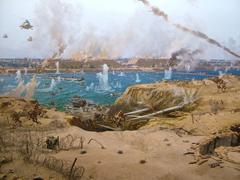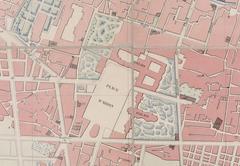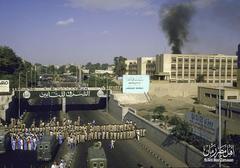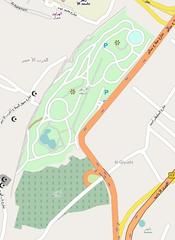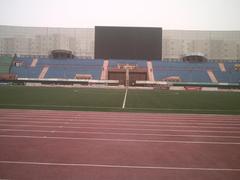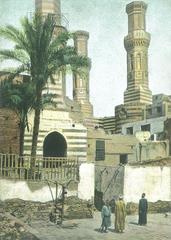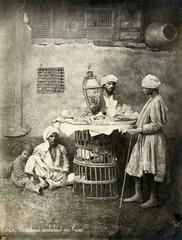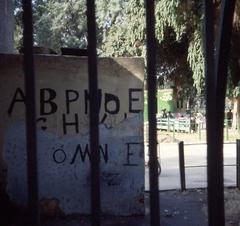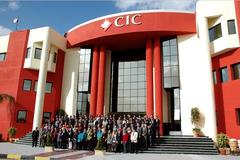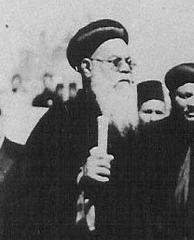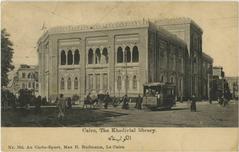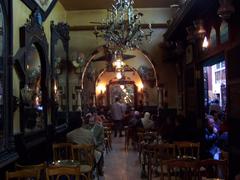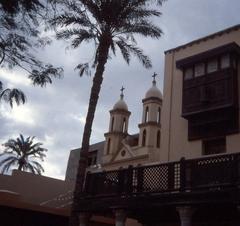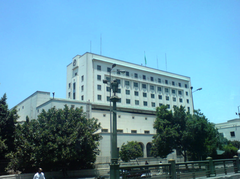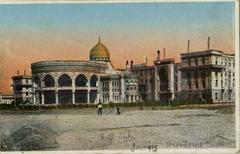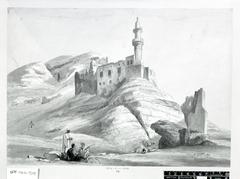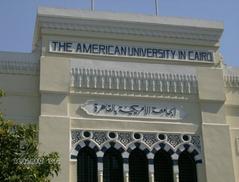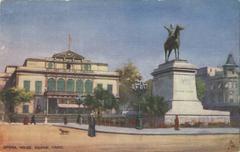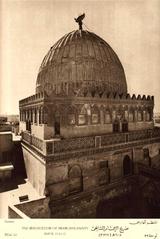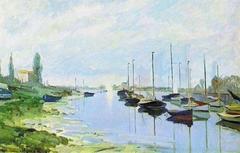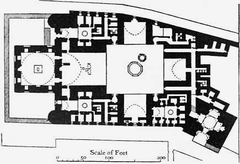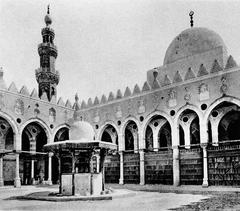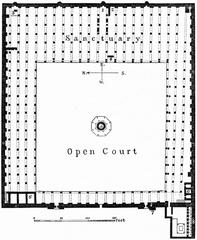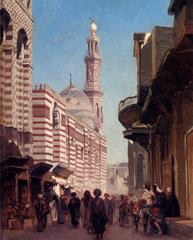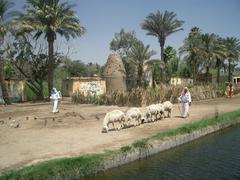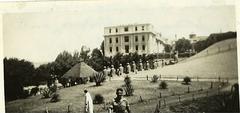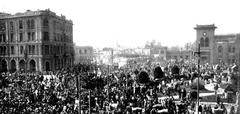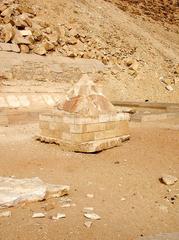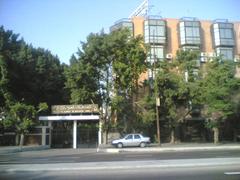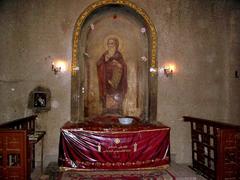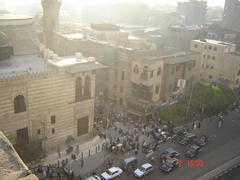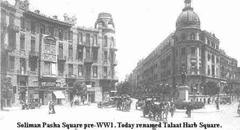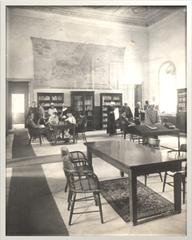Comprehensive Guide to Visiting Imhotep Museum, Saqqara, Egypt
Date: 19/07/2024
Introduction
The Imhotep Museum in Saqqara, Egypt, stands as a modern tribute to the rich tapestry of ancient Egyptian history and culture. Named after the illustrious polymath Imhotep, this museum not only commemorates the genius behind the Step Pyramid but also houses a treasure trove of artifacts from the Saqqara necropolis. Inaugurated in April 2006, the museum offers visitors a comprehensive insight into the architectural, medical, and religious advancements of ancient Egypt. Situated near the Step Pyramid of Djoser, the museum is a pivotal stop for anyone keen on exploring the depths of Egypt’s historical and cultural legacy (Egypt Travel).
Imhotep, who lived during the 27th century BCE, was a man of many talents, including architecture, medicine, and priesthood. His most notable achievement, the design of the Step Pyramid, is considered the earliest colossal stone building in Egypt and a precursor to the iconic pyramids at Giza. The museum’s collection, therefore, offers not just a glimpse into ancient Egyptian life but also into the mind of one of history’s first architects (National Geographic).
This guide provides detailed information on the museum’s history, key exhibits, visitor information, and more, ensuring that your visit to the Imhotep Museum is as enriching as it is enjoyable.
Table of Contents
- [Origins and Establishment](#origins-and-establishmentorigins-and-establishment)
- [Imhotep - The Man Behind the Name](#imhotep---the-man-behind-the-nameimhotep---the-man-behind-the-name)
- [Construction and Design of the Museum](#construction-and-design-of-the-museumconstruction-and-design-of-the-museum)
- [Key Exhibits and Artifacts](#key-exhibits-and-artifactskey-exhibits-and-artifacts)
- [The Step Pyramid Complex](#the-step-pyramid-complexthe-step-pyramid-complex)
- [Tomb Artifacts](#tomb-artifactstomb-artifacts)
- [Daily Life in Ancient Egypt](#daily-life-in-ancient-egyptdaily-life-in-ancient-egypt)
- [Archaeological Discoveries](#archaeological-discoveriesarchaeological-discoveries)
- [The Serapeum](#the-serapeumthe-serapeum)
- [Recent Excavations](#recent-excavationsrecent-excavations)
- [Educational and Cultural Significance](#educational-and-cultural-significanceeducational-and-cultural-significance)
- [Preservation and Research](#preservation-and-researchpreservation-and-research)
- [Educational Programs](#educational-programseducational-programs)
- [Visitor Information](#visitor-informationvisitor-information)
- [Visiting Hours and Tickets](#visiting-hours-and-ticketsvisiting-hours-and-tickets)
- [Travel Tips](#travel-tipstravel-tips)
- [Facilities and Amenities](#facilities-and-amenitiesfacilities-and-amenities)
- [Nearby Attractions](#nearby-attractionsnearby-attractions)
- [Guided Tours](#guided-toursguided-tours)
- [FAQ](#faqfaq)
- [Conclusion](#conclusionconclusion)
- [References](#referencesreferences)
Origins and Establishment
The Imhotep Museum, located in Saqqara, Egypt, is named after the ancient Egyptian polymath Imhotep, who served as the chancellor to Pharaoh Djoser and is credited with designing the Step Pyramid at Saqqara. The museum was inaugurated in April 2006 to house and display artifacts discovered in the Saqqara necropolis, providing a comprehensive look into the history and culture of ancient Egypt.
Imhotep - The Man Behind the Name
Imhotep, who lived during the 27th century BCE, was a man of many talents. He was an architect, physician, and high priest of the sun god Ra at Heliopolis. Imhotep’s most notable achievement is the design of the Step Pyramid, which is considered the earliest colossal stone building in Egypt and a precursor to the later pyramids at Giza. His contributions to architecture and medicine were so significant that he was later deified and worshipped as a god of wisdom and medicine.
Construction and Design of the Museum
The Imhotep Museum was constructed to provide a modern facility for the display and preservation of artifacts from the Saqqara necropolis. The museum’s design incorporates elements that reflect ancient Egyptian architecture, creating a seamless blend between the ancient and the modern. The museum is divided into several halls, each dedicated to different aspects of ancient Egyptian life and the discoveries made in Saqqara.
Key Exhibits and Artifacts
The Step Pyramid Complex
One of the museum’s main attractions is the collection of artifacts related to the Step Pyramid complex. This includes architectural elements, tools used in the construction, and inscriptions that provide insights into the techniques and materials used by Imhotep and his workers. Visitors can also see a detailed model of the Step Pyramid complex, which helps to visualize the scale and grandeur of this ancient structure.
Tomb Artifacts
The museum houses a vast array of artifacts discovered in the tombs of Saqqara. These include funerary items such as sarcophagi, canopic jars, and shabti figures, which were placed in tombs to serve the deceased in the afterlife. One of the most notable exhibits is the collection of beautifully decorated wooden coffins, which showcase the artistry and craftsmanship of ancient Egyptian artisans.
Daily Life in Ancient Egypt
Another section of the museum is dedicated to artifacts that provide a glimpse into the daily life of ancient Egyptians. This includes pottery, tools, and household items that were used by people living in the Saqqara region. These artifacts help to paint a picture of the everyday activities and practices of ancient Egyptians, from cooking and farming to religious rituals and ceremonies.
Archaeological Discoveries
The Serapeum
The Serapeum of Saqqara, a burial place for the sacred Apis bulls, is one of the most significant discoveries in the area. The museum features artifacts and information related to the Serapeum, including statues, inscriptions, and burial items. The Serapeum was discovered by French archaeologist Auguste Mariette in 1851, and its excavation revealed a wealth of information about the religious practices and beliefs of ancient Egyptians.
Recent Excavations
The museum also highlights recent archaeological discoveries in Saqqara, showcasing the ongoing efforts to uncover and preserve the region’s rich history. This includes newly discovered tombs, statues, and other artifacts that continue to provide new insights into ancient Egyptian civilization. The museum frequently updates its exhibits to include the latest findings, ensuring that visitors have access to the most current information.
Educational and Cultural Significance
Preservation and Research
The Imhotep Museum plays a crucial role in the preservation and research of ancient Egyptian artifacts. The museum’s facilities include state-of-the-art conservation labs where artifacts are carefully restored and preserved. Researchers and archaeologists from around the world collaborate with the museum to study the artifacts and uncover new information about ancient Egyptian history and culture.
Educational Programs
The museum offers a range of educational programs and activities for visitors of all ages. This includes guided tours, workshops, and lectures that provide in-depth information about the exhibits and the history of Saqqara. The museum also collaborates with schools and universities to offer educational resources and opportunities for students to learn about ancient Egyptian history and archaeology.
Visitor Information
Visiting Hours and Tickets
The Imhotep Museum is open daily from 9:00 AM to 5:00 PM, with extended hours during peak tourist seasons. Admission fees are reasonable, with discounts available for students, seniors, and groups. Tickets can be purchased at the entrance or online through the museum’s official website.
Travel Tips
The museum is located near the entrance to the Saqqara necropolis, making it easily accessible for visitors. It is advisable to wear comfortable shoes and bring water, as the area can be hot and requires a fair amount of walking. Guided tours are highly recommended for a more in-depth experience.
Facilities and Amenities
The museum is equipped with modern facilities to ensure a comfortable and enjoyable visit. This includes air-conditioned galleries, a gift shop, and a café where visitors can relax and enjoy refreshments. The museum is also wheelchair accessible, with ramps and elevators available for visitors with mobility issues.
Nearby Attractions
While visiting the Imhotep Museum, consider exploring other nearby attractions in Saqqara, such as the Step Pyramid, the Pyramid of Unas, and the Mastaba of Ti. These sites offer additional insights into ancient Egyptian history and are all within a short distance from the museum.
Guided Tours
For a more in-depth experience, visitors can join guided tours led by knowledgeable guides who provide detailed information about the exhibits and the history of Saqqara. These tours are available in multiple languages and can be booked in advance through the museum’s website.
FAQ
- What are the Imhotep Museum’s opening hours? The museum is open daily from 9:00 AM to 5:00 PM.
- How much are tickets for the Imhotep Museum? Ticket prices are reasonable, with discounts for students, seniors, and groups. Tickets can be purchased at the entrance or online.
- Is the museum accessible for visitors with mobility issues? Yes, the museum is wheelchair accessible, with ramps and elevators available.
- Are guided tours available? Yes, guided tours are available in multiple languages and can be booked in advance.
Conclusion
Visiting the Imhotep Museum in Saqqara is an enriching journey into the annals of ancient Egyptian history. The museum’s extensive collection of artifacts, from the Step Pyramid complex to everyday items used by ancient Egyptians, offers a comprehensive understanding of the cultural and historical significance of the Saqqara necropolis. The museum’s commitment to preservation and education underscores its role as a vital institution for both scholars and tourists alike.
Moreover, the Imhotep Museum serves as a bridge between the ancient and modern worlds, seamlessly blending historical artifacts with contemporary museum practices. With its state-of-the-art conservation labs and engaging educational programs, the museum not only preserves the past but also educates future generations about the rich heritage of ancient Egypt (Egypt Travel).
For those planning a visit, the museum offers a range of amenities, including accessibility features, guided tours, and nearby attractions, ensuring a comfortable and informative experience. Whether you are a history enthusiast, a student, or a casual visitor, the Imhotep Museum in Saqqara is a must-visit destination that offers a unique and profound glimpse into the world of ancient Egypt.
Stay connected with the latest updates and explore more about Egypt’s historical treasures by following the museum on social media or checking out additional resources and guides (Egypt Travel).
References
- National Geographic, 2024, Various Authors source url
- Egypt Travel, 2024, Various Authors source url

